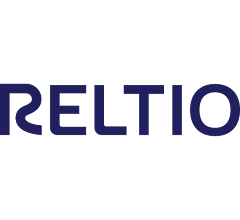Salesforce details the next wave of AI-Powered Analytics for Tableau

Discover how companies are responsibly integrating AI in production. This invite-only event in SF will explore the intersection of technology and business. Find out how you can attend here.
Salesforce’s Tableau division today is laying out its vision for the next generation of data analytics at the company’s Tableau Conference 2024 event. Surprise, surprise: AI is at the core.
Tableau’s software is all about helping data analysts and business users to benefit from enterprise data.
Over the course of the last year in particular, Tableau has increasingly leaned into AI to power data insights and make it easier for its users to unlock value from data.
At the conference, Tableau will be rolling out new updates as well as discussing more about previously announced AI features including Tableau Pulse and Einstein Copilot for Tableau.
The company is introducing Viz Extensions, providing users with enhanced visual libraries for creating data visualizations.
Additionally the Tableau Desktop Public Edition will enable users to more easily work with public data on a local system.
Looking ahead, Salesforce provided guidance on where its next round of innovations and updates are headed.
During a media briefing with press and analysts ahead of the conference, Tableau’s CEO Ryan Aytay described there being three waves of innovation in the data analytics industry.
The first wave involved full-service analytics that required coding while the second wave enabled self service visualization. The third wave which is now occurring is all about consumerization of data analytics, making insights accessible to all employees.
“The future of Tableau and where we are now in the third wave is all about delivering on where we came from with the analyst, this is the deep visualizations, data cataloging, data prep, etc.,” Aytun said. “But it’s also about bringing data and AI for everyone, every user like myself, because I’m of course a business user, but I need data to do my job.”
How AI is giving a new pulse to data analytics
At the conference, the company will be detailing a series of new features for its Tableau Pulse service.
Tableau Pulse became generally available on Feb 22 of this year, providing organizations with an AI-powered service that uses natural language queries to help build data visualizations and surface important metrics, trends and recommendations. Elizabeth Maxon, SVP and CMO at Tableau said that to date over 3,000 organizations have deployed Pulse.
Among the new features now landing in Tableau Pulse is a feature called Ask Q&A that helps users to more easily find the right questions to ask about data.
The ability to build and understand data often is all about having specific goals. To that end, Tableau Pulse is getting a new Metrics Bootstrapping feature to help users create and track new metrics that helps organizations.
The new Metrics Goals feature takes metrics a step further enabling users to more easily compare the progress on a specific metric against a particular goal.
The future of analytics is all about making data easier to work with
Southard Jones, Tableau Chief Product Officer at Tableau, shared a forward-looking vision for the future of analytics, addressing challenges like fragmented data landscapes, trust in data, embedded insights, and reusability.
“The data that we all want to get insights from include unstructured data, structured data, and even streaming data,” Jones said. “So you can imagine a world in the future where Tableau allows you to bring in any of that data.”
Jones demonstrated a concept called agile semantics to bridge the gap between one-off exploratory analysis and official governed metrics.
“The challenge is weighing the flexibility that analysts need to create metrics on the fly with the certified governance that organizations need to have a common business language,” he said.
The agile semantics capability will help users to first be able to make use of the data, removing duplicates and making sure the data is clean overall.
After the data cleansing, the system will be able to look at data of any type and be able to suggest metrics or a hierarchy. The overall process will help users to more easily create trusted and governed metrics for more types of data analysis.
Tableau will be linking data insights to action
Tableau is also aiming to help organizations make data insights more actionable.
Jones noted that he’s been in the data analytics and business intelligence space for two decades and the reality is that insights often don’t easily link to action.
“The truth of the matter is today that’s a fully offline activity, you get an insight, you go somewhere else, you tell someone what you should do about it,” Jones said. “The best case, that’s an offline activity and worst case scenario, the insights die on the vine.”
What Tableau will be doing increasingly over time is embedding analytics into the tools where people work. For example, he noted that a metric showing a customer support team doing really well could be linked to a workflow tool that will enable human resources to get approval to provide the team with a bonus.
Fundamentally Jones emphasized that organizations don’t need a modern data stack, organizations need a more open data stack.
“I joke that there’s this term called the modern data stack out there in the industry, but the only thing modern about it is the people who are writing the code are younger than me,” Jones said. “The modern data stack needs to be rethought and things need to become a lot more open.”



